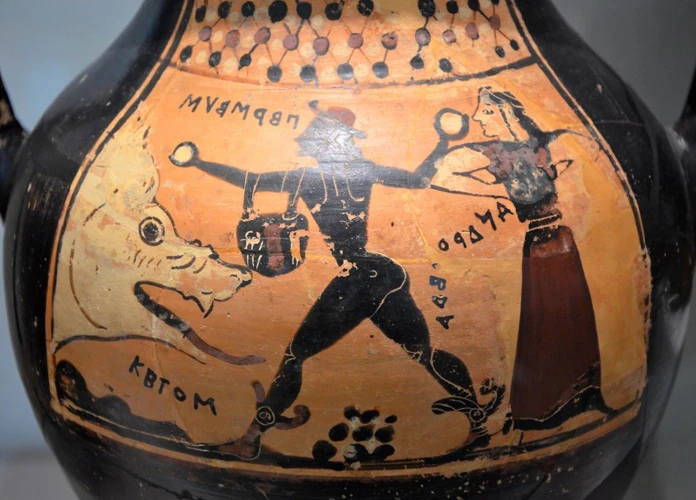Decoding the Mythology of Perseus and Andromeda: A Love Story in the Stars
Step into the enchanting world of ancient Greek mythology and immerse yourself in the captivating tale of Perseus and Andromeda. This legendary love story has captured the imaginations of countless generations, weaving together adventure, romance, and celestial wonder. As we delve into the intricate web of myth and symbolism, we uncover the hidden secrets that lie in the stars and explore the profound impact of this timeless narrative on cultures throughout history. Join us on a celestial journey as we decode the mythology of Perseus and Andromeda, a tale that continues to shine brightly in the annals of mythology.
Historical Background
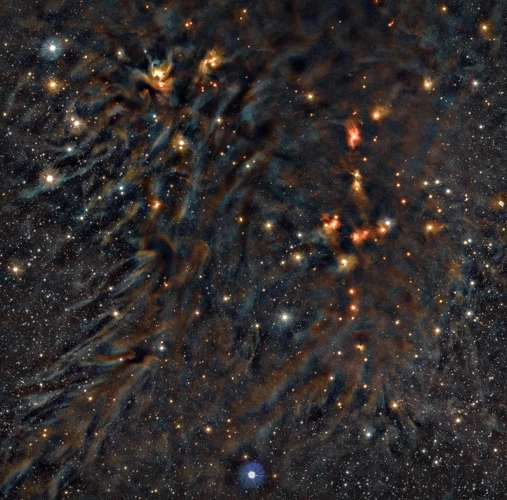
The historical background of the Perseus and Andromeda myth traces back to ancient Greek mythology. This captivating tale has its roots in the works of renowned Greek poet, Homer, who first mentioned Perseus in his epic poem, the Odyssey. Perseus, a demigod with divine lineage, was the son of Zeus, the king of the gods, and Danaë, a mortal princess. The story gained further prominence in Ovid’s Metamorphoses, where the tale of Perseus and Andromeda unfolds in detail. The myth holds great significance in Greek culture, highlighting the prevailing themes of heroism, fate, and the triumph of love. Throughout history, this narrative has inspired countless artists, writers, and thinkers, leaving an indelible mark on the collective consciousness of humanity. To truly understand the profound symbolism and cultural impact of Perseus and Andromeda, we must explore the historical context and unravel the ancient mysteries that surround this timeless love story.
The Characters: Perseus and Andromeda
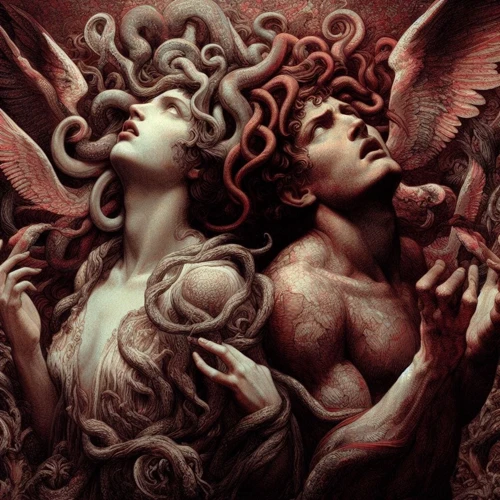
In the mythological tale of Perseus and Andromeda, the two central characters play pivotal roles in the unfolding narrative. Perseus, the heroic protagonist, is portrayed as a courageous demigod blessed with exceptional strength, intelligence, and ingenuity. Born to Zeus and Danaë, he embarks on a perilous journey to fulfill a prophecy and to prove his worth. Andromeda, on the other hand, is a beautiful and innocent princess, daughter of King Cepheus and Queen Cassiopeia. She becomes the unwilling victim of her mother’s arrogance, leading to her imminent peril and eventual salvation by Perseus. The contrasting personalities of Perseus and Andromeda create a compelling dynamic within the story, with Perseus embodying bravery and resourcefulness, while Andromeda represents vulnerability and purity. Together, they form a profound bond that transcends their individual experiences and demonstrates the power of love in overcoming adversity. The intertwined destinies of Perseus and Andromeda offer a timeless tale of heroism, sacrifice, and the enduring strength of human connections.
The Mythological Narrative
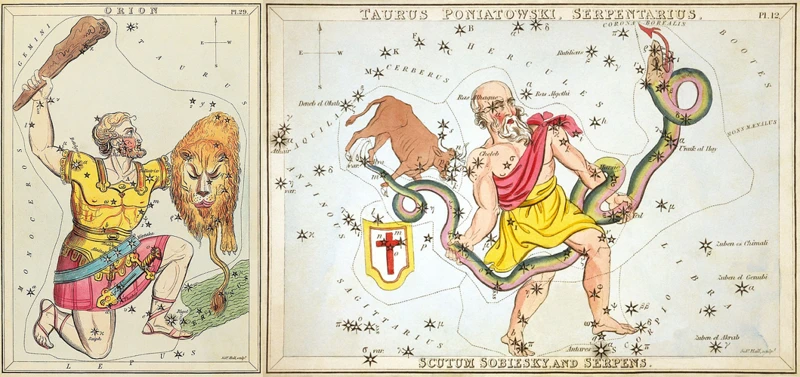
The mythological narrative of Perseus and Andromeda unfolds with a series of captivating events that blend adventure, prophecy, and true love. It all begins with a prophecy that foretells the future peril of the Ethiopian princess, Andromeda, due to the vanity of her mother, Queen Cassiopeia. As punishment for her mother’s arrogance, the gods decree that Andromeda must be sacrificed to a sea monster. However, Perseus, the brave and resourceful hero, embarks on a perilous journey to save her. Equipped with magical gifts from the gods, including a shield that reflects the gaze of the Gorgon Medusa, Perseus confronts and defeats the monster, thus rescuing Andromeda from her impending doom. The mythological narrative of Perseus and Andromeda serves as a testament to the power of love and the triumph of good over evil. It is a story that continues to captivate and inspire, inviting us to delve into its depths and ponder the timeless themes it embodies.
The Prophecy
In the captivating myth of Perseus and Andromeda, the prophecy plays a pivotal role in setting the stage for the events that unfold. The prophecy reveals a dreadful fate for Andromeda, the daughter of King Cepheus and Queen Cassiopeia of Ethiopia. Cassiopeia’s vanity and pride led her to boast about Andromeda’s unparalleled beauty, even claiming it surpassed that of the Nereids, the sea nymphs. This arrogance angered the sea god Poseidon, who sent a sea monster, Cetus, to ravage the coast as punishment. Desperate to save their kingdom, King Cepheus and Queen Cassiopeia consulted an oracle, who declared that Andromeda must be sacrificed to appease the wrath of the gods and save their land from destruction. The prophecy echoed through the kingdom, a grim proclamation of doom that left the royal household in despair. The cruel twist of fate set the stage for Perseus’ heroic journey to rescue Andromeda, defying the prophecy and carving his own destiny in the stars. Explore more about mythological origins in the Ursa Major and Ursa Minor constellations.
Journey of Perseus
Perseus embarked on a perilous journey filled with trials and tribulations. His quest began when King Polydectes, smitten by Perseus’ mother, Danaë, decided to get rid of Perseus by sending him on a seemingly impossible mission: to slay the terrifying Gorgon, Medusa. Equipped with tools from the gods, including a reflective shield from Athena, winged sandals from Hermes, and a magical pouch from Hades, Perseus set off on his extraordinary adventure. His quest led him to the lair of the Graeae, three ancient sisters who shared one eye and one tooth among them, whom he cunningly outwitted to obtain their vital information. Perseus ultimately faced the monstrous Medusa, whose mere gaze could turn any mortal to stone. With the help of Athena’s shield, he avoided direct eye contact and used the reflections to precisely strike Medusa with his adamantine sword. From her severed neck sprang forth the winged horse Pegasus, and from her blood, the coral reefs were said to have been formed. After this astonishing victory, Perseus made his way back home, utilizing his winged sandals to navigate through numerous obstacles, encountering monsters, and even saving the beautiful princess, Andromeda. The journey of Perseus is a testament to his bravery, resourcefulness, and determination to fulfill his destiny against all odds. With each step, he grew closer to his ultimate triumph and the love that awaited him.
Perseus and the Gorgon
The encounter between Perseus and the Gorgon Medusa is a pivotal moment in the mythology of Perseus and Andromeda. Medusa, one of three Gorgon sisters, possessed a fearsome visage and a gaze that could turn any mortal to stone. Armed with special tools from the gods, Perseus set out on a perilous quest to slay the Gorgon and bring back her head as a gift for the king. With the guidance of Hermes and Athena, Perseus embarked on his journey, equipped with winged sandals, a mirrored shield, and a sword. These tools were essential for his quest as he needed to navigate the treacherous landscape, avoid the lethal gaze of Medusa, and defeat the monstrous creature. Legends describe the tense encounter, with Perseus using his polished shield to catch the gaze of Medusa without directly looking at her, allowing him to sever her head from her body in a swift strike. This epic victory over the Gorgon showcases Perseus’ bravery, cunning, and divine assistance, proving that even the most formidable of foes can be conquered. The significance of Perseus’ triumph over Medusa is often associated with the triumph of good over evil and the power of intelligence and strategy in overcoming seemingly insurmountable challenges. To this day, the tale of Perseus and the Gorgon continues to captivate audiences, etching its place in the annals of legendary battles against mythical creatures.
Rescuing Andromeda
After successfully slaying the fearsome Gorgon, Perseus continued his heroic journey towards the kingdom of Ethiopia. It was here that he encountered a heartbreaking sight – the beautiful Andromeda, daughter of King Cepheus and Queen Cassiopeia, chained to a rock by the treacherous sea monster, Cetus. Andromeda’s parents had foolishly boasted that their daughter was more beautiful than the sea nymphs known as the Nereids, invoking the wrath of Poseidon, the god of the sea.
- Undeterred by the monster’s looming presence, Perseus approached Andromeda, instantly captivated by her radiant beauty and innocence. With unyielding determination, he devised a plan to defeat the fearsome creature and save the princess from a tragic fate.
- Utilizing his magical gifts from the gods, Perseus swooped down from the heavens, brandishing the severed head of Medusa, the mortal Gorgon. With a single gaze, the monsters of the sea turned to stone, including the menacing Cetus.
- Andromeda’s rescue marked a turning point in the myth, symbolizing the triumph of good over evil and the power of love conquering all obstacles. Perseus had not only defeated the dreaded monster, but also saved the beautiful princess, earning the eternal gratitude of her family and the admiration of the entire kingdom.
Symbolism in the Stars
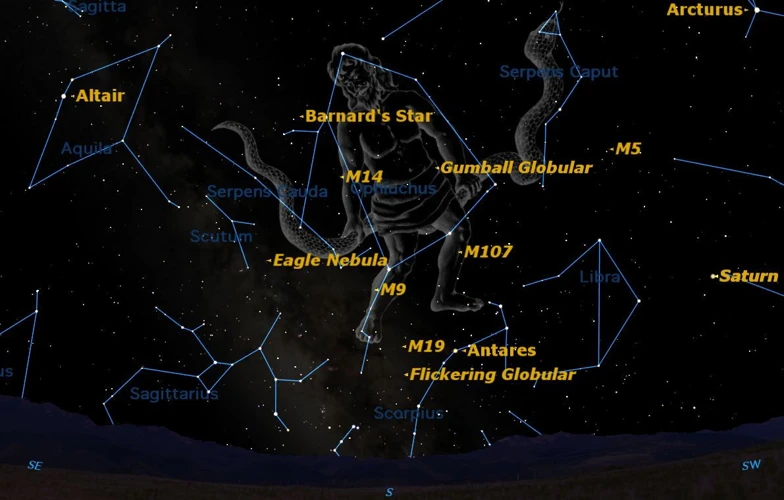
The symbolism in the stars surrounding the Perseus and Andromeda myth is awe-inspiring and deep-rooted in ancient mythology. One of the key constellations associated with the myth is the Perseus Constellation, which represents the hero Perseus himself. The constellation features bright stars such as Mirfak, Algol, and Algol’s partner, delta Persei, creating a celestial portrayal of the renowned hero. Another significant constellation is the Andromeda Constellation, named after the princess Andromeda, who plays a pivotal role in the myth. This constellation comprises stars like Alpheratz, Mirach, and Almach, forming a stunning display in the night sky. These constellations serve as celestial reminders of the enduring love story and the bravery displayed by Perseus in his quest to save Andromeda from the wrath of the sea serpent. Exploring the symbolism of these constellations and their connections to other celestial objects deepens our understanding of the myth and adds to the rich tapestry of Greek mythology. (You can read more about the legend of the Draco constellation to gain further insights into the mythical cosmos).
Perseus Constellation
The Perseus constellation, named after the mythical hero, is a prominent constellation in the night sky adorned with several fascinating celestial objects. Located in the northern hemisphere, it is best seen during the winter months. One of the most notable features of the Perseus constellation is the bright star called Mirfak, also known as Alpha Persei. Mirfak shines brilliantly, adding to the constellation’s allure. Another remarkable object within the constellation is the Double Cluster, known as NGC 884 and NGC 869. This stunning pair of open star clusters captivates stargazers with its brilliant display of stars. Additionally, Perseus is home to the famous eclipsing binary star system named Algol, also known as the Demon Star. Algol’s brightness varies periodically, creating a captivating sight for astronomers. Exploring the Perseus constellation not only offers a glimpse into the realm of ancient Greek mythology but also provides a fascinating window into the vastness and beauty of our universe. To further unravel the mysteries of other celestial wonders, you may want to delve into the enigmatic Pleiades cluster, which has its own intriguing mythology and significance in the night sky.
Andromeda Constellation
The Andromeda Constellation, located in the northern sky, holds a prominent place in the mythological narrative surrounding Perseus and Andromeda. This constellation is named after the princess Andromeda, who was the daughter of King Cepheus and Queen Cassiopeia. The celestial representation of Andromeda is intricately linked to the myth of her rescue by Perseus. Within the Andromeda Constellation lies the famous Andromeda Galaxy, also known as Messier 31, a spiral galaxy that is the closest major galaxy to our Milky Way. The Andromeda Galaxy is a breathtaking sight, with its spiral arms and billions of stars, forming a cosmic tapestry in the night sky. It serves as a reminder of the enduring love between Perseus and Andromeda, as their celestial counterparts shine brightly for eternity. The Andromeda Constellation itself can be identified by its distinctive “W” or “M” shape, formed by its prominent stars, including Alpheratz, Mirach, and Almach. Exploring the Andromeda Constellation allows us to connect with the mythical tale of Perseus and Andromeda on a celestial level, marveling at the beauty and vastness of the universe. To further unravel the mysteries of the cosmos, we can delve deeper into the fascinating story of the Pleiades, another star cluster that holds its own mythological significance, enriching our understanding of the interconnectedness of ancient stories and the celestial wonders above. (Link: Unraveling the Pleiades Mystery)
Interpretations and Cultural Impact
The myth of Perseus and Andromeda has sparked numerous interpretations and had a significant cultural impact throughout history. In ancient Greece, the story served as a moral lesson, highlighting the virtues of heroism, determination, and the power of love. Artists and sculptors depicted Perseus slaying the monstrous Medusa, capturing the essence of bravery and triumph over adversity. With the rise of the Renaissance, the myth experienced a resurgence, inspiring artists like Benvenuto Cellini to create exquisite sculptures of Perseus holding the severed head of Medusa. In literature, writers such as William Shakespeare and Alexander Pope drew inspiration from the tale, incorporating elements of Perseus and Andromeda into their works. The myth also influenced modern science fiction, with movies like “Clash of the Titans” bringing the timeless story to a new generation. Additionally, the constellations of Perseus and Andromeda continue to be visible in the night sky, serving as a constant reminder of the enduring power of love and bravery. The cultural impact of Perseus and Andromeda can be seen in art, literature, and even in modern-day references, symbolizing the indelible mark that ancient mythology has left on our collective imagination.
Conclusion
In conclusion, the mythology of Perseus and Andromeda continues to captivate and inspire audiences across the ages. This ancient love story, steeped in adventure, fate, and celestial symbolism, holds a timeless allure that transcends cultural boundaries. The journey of Perseus, from fulfilling the prophecy to slaying the Gorgon and rescuing Andromeda, represents the triumph of heroism and the power of love. The constellations of Perseus and Andromeda, immortalized in the stars, serve as a constant reminder of this enduring tale. Through their mythology, we gain insight into the values, beliefs, and aspirations of ancient civilizations. The legacy of Perseus and Andromeda lives on, immortalized in art, literature, and popular culture, reminding us of the enduring power of love and the boundless potential of human resilience. So, let us gaze up at the night sky and find solace in the stars, for the legacy of Perseus and Andromeda will continue to shine brightly, eternally reminding us of the beauty and wonder of ancient mythology.
Frequently Asked Questions
FAQs about the Mythology of Perseus and Andromeda
1. What is the significance of the Perseus and Andromeda myth in Greek mythology?
The Perseus and Andromeda myth holds great significance in Greek mythology as it explores themes of heroism, fate, and the power of love. It showcases the triumph of a mortal hero against formidable adversaries and emphasizes the role of divine intervention in shaping destinies.
2. Who was Perseus in Greek mythology?
Perseus was a demigod in Greek mythology, known as the son of Zeus and Danaë. He was a renowned hero and is best known for his slaying of the Gorgon Medusa, as well as for his role in rescuing Andromeda from a sea monster.
3. Who was Andromeda in Greek mythology?
In Greek mythology, Andromeda was a princess who fell victim to a sea monster as punishment for her mother’s vanity. She was later rescued by Perseus, and the two eventually fell in love and married, creating a powerful union between mortal and divine.
4. What was the prophecy surrounding Perseus?
According to the prophecy, it was foretold that Danaë, the mother of Perseus, would give birth to a son who would one day kill his grandfather, King Acrisius. This prophecy ultimately sets in motion the events that lead to Perseus’s heroic journey.
5. How did Perseus defeat the Gorgon?
Perseus managed to defeat the Gorgon, Medusa, by using a mirrored shield to avoid making direct eye contact with her. Armed with a sword given to him by the gods, he successfully beheaded Medusa, turning her into a petrifying force.
6. What role did divine intervention play in the Perseus and Andromeda myth?
Divine intervention played a significant role in the Perseus and Andromeda myth. The gods provided Perseus with weapons, guidance, and even a winged horse named Pegasus to aid him in his quests. They also orchestrated events that led to Perseus and Andromeda’s fateful encounter.
7. Are Perseus and Andromeda actual constellations in the night sky?
Yes, both Perseus and Andromeda are named after the mythological characters and are constellations visible in the night sky. The constellations are a reminder of the enduring legacy and impact of the mythological tale.
8. How has the story of Perseus and Andromeda influenced art and literature?
The story of Perseus and Andromeda has deeply influenced art and literature throughout history. It has served as inspiration for paintings, sculptures, plays, and countless written works. The themes of heroism, love, and the interplay between mortal and divine have resonated with artists and storytellers across different cultures and time periods.
9. Are there other mythological constellations that relate to the Perseus and Andromeda story?
While Perseus and Andromeda are the central characters, there are other mythological constellations associated with the tale. For example, the constellation of Cetus represents the sea monster that threatens Andromeda, and Pegasus represents the winged horse that aids Perseus in his journey.
10. How has the Perseus and Andromeda myth influenced popular culture?
The Perseus and Andromeda myth has left an indelible mark on popular culture. It has been adapted into numerous films, books, and television shows, further popularizing the enduring love story and its themes of bravery and romance. The characters of Perseus and Andromeda continue to captivate audiences worldwide.

